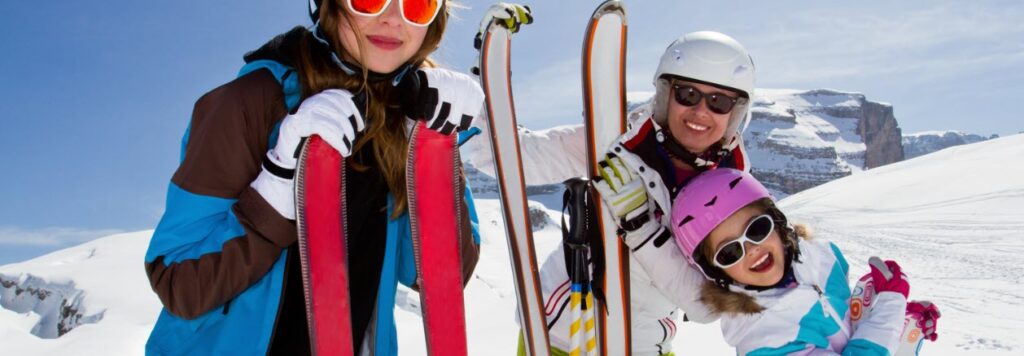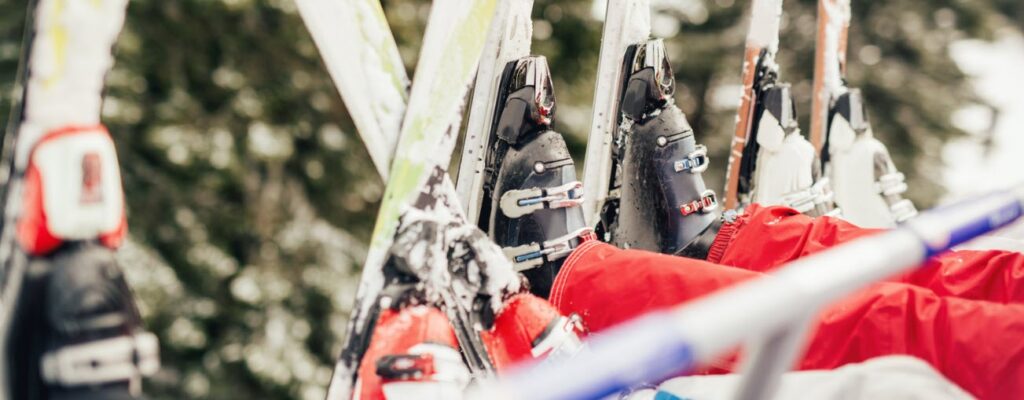Hey there travel enthusiasts and welcome to my post where we will check out my 5 tips for flying with snow skis this year. As we know, flying with sports equipment can be a bit tricky, but with the right preparation and knowledge, you can ensure a smooth and stress-free experience.
So for those of you looking to hit the slopes in some far off (or maybe not so far off) exotic places, let’s have a look at some tips tips to make things a little easer for you.
- Packing Skis for Air Travel
- Navigating the Airport
- Arriving at Your Destination
- Don’t Take Them
- Hitting the Slopes Abroad
Can You Bring Your Snow Skis With You On A Plane?
Before we start, let’s first just check out some of the areas of concern when it comes to flying with snow skis. To start with, even thought every airline has its policy, most will allow you to take them with you with some conditions. In my experience, these are:
- Snow skis are not considered standard baggage meaning you will usually have to pay an extra baggage fee.
- You can generally not check your bags in at the desk – rather you will have to lug it over to the oversized luggage depot (this is where you will pick them up from as well).
- In many cases, snow skis (or snow boards) and all additional equipment must be stowed within a fit for purpose travel bag to safeguard the equipment while in transit.
- Even though it is considered oversized, many airlines still implement weight limits as well so it is well worth checking these out before you pack.
And once you land, you may also be subjected to local bio regulations as well – e.g. here in Australia, we usually have to clean our skis, poles and boots etc. before we can cross through customs.
Check out these: 3 Best Travel Bags for Snow Skis
Tips For Flying With Snow Skis
Ok, so with all that in mind, let’s check out my 5 snow ski travel tips below:
1. Packing Skis for Air Travel
When it comes to flying with your snow skis, proper packing is essential to ensure that your equipment arrives at your destination in good condition. Here are some tips on how to pack skis for airline travel.
Use Ski Bags – Invest in a quality ski bag to protect your skis during transport. Look for a bag that is padded, has sturdy zippers and come with compression straps and buckles to help keep your skis secure and prevent scratches. If you have multiple pairs of skis, consider using separate bags for each pair.
Secure Skis and Poles – Before placing your skis in the bag, use ski straps or a rubber band to keep them together as this will help prevent them from shifting during transport and limit scratches. Cover the tips of your ski poles with tip covers or wrap foam pipe insulation around the tips to prevent damage to the bag and other items.
Secure Ski Boots – Most ski bags have extra space for ski boots so if you plan to pack your boots in the same bag as your skis, make sure to wrap them in a plastic bag or cloth to prevent scratches and damage. You can also use a separate boot bag to protect your boots and keep them organized.
Check out these: 3 Best Snowboard Travel Bags
2. Navigating the Airport
When flying with skis, navigating the airport can be a bit daunting. Here are some tips to help make the process smoother.
Checking in Ski Equipment
When you arrive at the airport, head to the check-in counter to check your ski equipment. Make sure you have a ski bag that is appropriate for your gear however some airlines may require you to purchase a special ski bag, so check with your airline before you arrive.
When checking in your ski equipment, be prepared to pay an additional fee. The fee varies by airline and can range from $25 to $100. Be sure to confirm the price before you attempt to check-in.
Security Checks
In most cases, your bags will be checked in at the airline counter, however if you are taking them through security, you may need to remove your skis and ski boots from your ski bag and place them in the provided bins. Be sure to remove any other items from your ski bag before going through security, such as water bottles or snacks.
It’s a good idea to take a photo of your equipment and bag in case you need to make a damage claim. If you have any questions or concerns, don’t hesitate to ask a TSA agent for assistance.

3. Arriving at Your Destination
After a long flight, you are finally at your destination and ready to hit the slopes. Here are some tips for collecting and inspecting your ski equipment upon arrival.
Collecting Ski Equipment
When you arrive at the baggage claim, look out for your ski bag. It may take longer than other bags – or even be found in a different area destinated for oversized baggage – so be patient. Once you have your bag, make sure that all your equipment is inside. Check for any missing items, such as ski poles or boots.
If you can’t find your ski bag, don’t panic. Head to the baggage office and report the missing bag. They will help you locate it and have it delivered to you as soon as possible.
Inspecting for Damage
Before you leave the airport, inspect your ski equipment for any damage. Look for scratches, dents or any other signs of damage. If you notice any damage, report it to the airline immediately. Take pictures of the damage as evidence.
It is also a good idea to check your ski bindings. Make sure they are still properly adjusted and secure. If you are not sure how to do this, ask for help from a professional.
4. Don’t Take Them
Now, this may sound funny but in my experience there are some good alternatives to trying to travel with your skis. Now, this depends on whether you absolutely must have your own gear with you or not, however I suggest considering the following:
- Have your skis and gear shipped to your destination – If you look around, there are courier or transport companies that can have your skis or snowboards transported to the course or your hotel rather than you having to pack them up and carry them through the airport. If you shop around, the price of this service is pretty comparable to the luggage fee you would pay the airline. The fact that you hardly ever have to deal with problems involving misplaced or broken gear is another strong selling factor.
- Rent – This next next alternative is to leave your skiing equipment behind at home and rent it at your location. Almost all ski fields and resorts provide rental equipment and almost always these these are upscale gear with well-known brands. This can be a little more expensive, but to be honest it is an option that we have chosen a number of times and trust me, the fact that you can turn up, get your skis there and then leave them behind is well worth the extra cost.
- Buy your other gear there – If weight is your issue, then another trick is to pack your skis and then purchase your other needs such as gloves, helmets etc. at the ski fields. This way it is only the skis you are taking and nothing else.

5. Hitting the Slopes Abroad
If you’re planning to hit the slopes abroad, there are a few things you should keep in mind to ensure a smooth and enjoyable skiing experience. Here are some tips to help you prepare for your international ski trip.
Understanding Local Ski Rules
Different countries have different rules and regulations when it comes to skiing so it’s important to familiarize yourself with the local rules before hitting the slopes. This can include everything from the types of trails available to the required safety equipment.
For example, in some countries, it’s mandatory to wear a helmet while skiing. In others, it’s mandatory to have a certain level of skiing experience before tackling certain trails. Make sure you research the local rules and regulations before you go, so you can avoid any unpleasant surprises.
Dealing with Altitude Sickness
Skiing at high altitudes can be a challenge for some people, especially if you’re not used to it. Altitude sickness can cause a variety of symptoms, including headaches, nausea and fatigue. To minimize the risk of altitude sickness, it’s important to take it easy for the first few days of your trip, drink plenty of water and avoid alcohol and caffeine.
If you do experience symptoms of altitude sickness, it’s important to rest and drink fluids. In severe cases, you may need to seek medical attention. Be sure to familiarize yourself with the symptoms of altitude sickness before you go, so you know what to look out for.
Ski Safety Abroad
Skiing abroad can be a lot of fun, but it’s important to take safety seriously. Make sure you have the necessary safety equipment including a helmet, goggles, and appropriate clothing. Familiarize yourself with the local emergency services and keep their contact information on hand.
It’s also a good idea to ski with a buddy or in a group, especially if you’re not familiar with the area. Stick to marked trails and obey all local rules and regulations. And finally, make sure you have appropriate travel insurance that covers skiing accidents and injuries.
Conclusion
There you have it, my useful tips for flying with snow skis. Let me know how this article helped you, and as usual, let me know of your experiences here.
Also, please do not hesitate to comment below if you have any questions, concerns, or corrections or would like me to check anything else out for you.
Until next time.
Have fun
Paul






